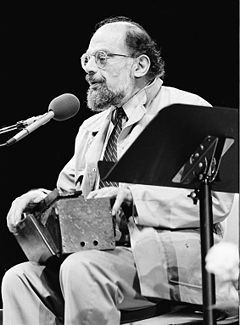This is your morning Open Thread. Pour your favorite beverage and review the past and comment on the future.
Find the past “On This Day in History” here.
October 10 is the 283rd day of the year (284th in leap years) in the Gregorian calendar. There are 82 days remaining until the end of the year.
On October 10, 1935, George Gershwin’s opera Porgy and Bess premieres on Broadway.
Porgy and Bess is an opera, first performed in 1935, with music by George Gershwin, libretto by DuBose Heyward, and lyrics by Ira Gershwin and DuBose Heyward. It was based on DuBose Heyward’s novel Porgy and the play of the same name which he co-wrote with his wife Dorothy Heyward. All three works deal with African American life in the fictitious Catfish Row (based on the real-life Rainbow Row) in Charleston, South Carolina, in the early 1920s.
Originally conceived by Gershwin as an “American folk opera”, Porgy and Bess premiered in New York in the fall of 1935 and featured an entire cast of classically trained African-American singers-a daring and visionary artistic choice at the time. Gershwin chose African American Eva Jessye as the choral director for the opera. Incorporating a wealth of blues and jazz idioms into the classical art form of opera, Gershwin considered it his finest work.
The work was not widely accepted in the United States as a legitimate opera until 1976, when the Houston Grand Opera production of Gershwin’s complete score established it as an artistic triumph. Nine years later the Metropolitan Opera gave their first performance of the work. This production was also broadcast as part of the ongoing Saturday afternoon live Metropolitan Opera radio broadcasts. The work is now considered part of the standard operatic repertoire and is regularly performed internationally. Despite this success, the opera has been controversial; some critics from the outset have considered it a racist portrayal of African Americans.
“Summertime” is by far the best-known piece from the work, and countless interpretations of this and other individual numbers have also been recorded and performed. The second best-known number is “It Ain’t Necessarily So“. The opera is admired for Gershwin’s innovative synthesis of European orchestral techniques with American jazz and folk music idioms.
Porgy and Bess tells the story of Porgy, a disabled black beggar living in the slums of Charleston, South Carolina. It deals with his attempts to rescue Bess from the clutches of Crown, her violent and possessive lover, and Sportin’ Life, the drug dealer. Where the earlier novel and stage-play differ, the opera generally follows the stage-play.
The Porgy and Bess original cast recording was included by the National Recording Preservation Board in the Library of Congress, National Recording Registry in 2003. The board selects songs on an annual basis that are “culturally, historically, or aesthetically significant.”
On July 14, 1993, the United States Postal Service recognized the opera’s cultural significance by issuing a commemorative 29-cent postage stamp, and in 2001 Porgy and Bess was proclaimed the official opera of the State of South Carolina.




 The first feature-length motion picture with synchronized dialogue sequences, its release heralded the commercial ascendance of the “talkies” and the decline of the silent film era. Produced by Warner Bros. with its Vitaphone sound-on-disc system, the movie stars Al Jolson, who performs six songs. Directed by Alan Crosland, it is based on a play by Samson Raphaelson.
The first feature-length motion picture with synchronized dialogue sequences, its release heralded the commercial ascendance of the “talkies” and the decline of the silent film era. Produced by Warner Bros. with its Vitaphone sound-on-disc system, the movie stars Al Jolson, who performs six songs. Directed by Alan Crosland, it is based on a play by Samson Raphaelson.
 The Orient Express is the name of a long-distance passenger train, the route for which has changed considerably in modern times. The first run of The Orient Express was on 4 October 1883. The train travelled from Paris to Giurgiu in Romania, via Munich and Vienna. At Giurgiu, passengers were ferried across the Danube to Ruse in Bulgaria to pick up another train to Varna. From here they completed their journey to Istanbul by ferry.
The Orient Express is the name of a long-distance passenger train, the route for which has changed considerably in modern times. The first run of The Orient Express was on 4 October 1883. The train travelled from Paris to Giurgiu in Romania, via Munich and Vienna. At Giurgiu, passengers were ferried across the Danube to Ruse in Bulgaria to pick up another train to Varna. From here they completed their journey to Istanbul by ferry.
 In 1963, Bob Dylan was asked by the authors of a forthcoming book on Woody Guthrie to contribute a 25-word comment summarizing his thoughts on the man who had probably been his greatest formative influence. Dylan responded instead with a 194-line poem called
In 1963, Bob Dylan was asked by the authors of a forthcoming book on Woody Guthrie to contribute a 25-word comment summarizing his thoughts on the man who had probably been his greatest formative influence. Dylan responded instead with a 194-line poem called  The Twilight Zone is an American anthology television series created by
The Twilight Zone is an American anthology television series created by
Recent Comments